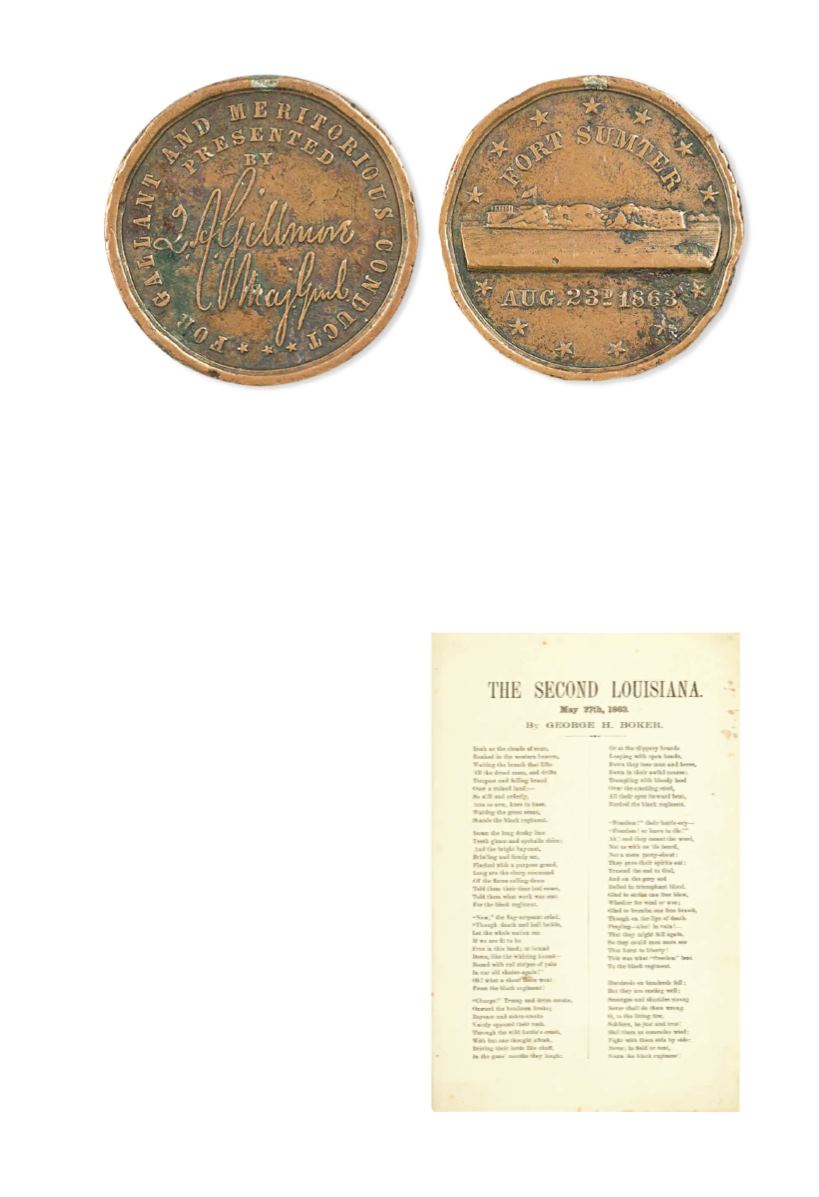

352
●
(MILITARY—CIVIL WAR.) GILLMORE, GENERAL QUINCY A.
The
Gillmore Medal “For Gallantry and Meritorious Conduct.”
Bronze medal, 3.5
centimeters in diameter; darkened patina consistent with age.
Np, 1863
[1,500/2,500]
THIS RARE BUT
“
UNOFFICIAL
”
CIVIL WAR MEDAL
,
was conceived and ordered struck by General
Quincy A. Gillmore to acknowledge and honor the troops that fought under his command in the cam-
paigns in South Carolina in 1863. Only four hundred were made, and a number awarded to colored
troops, especially those from the 54th Massachusetts Volunteers. Less than 3 percent of all troops in
the trenches and on the field in the South Carolina campaigns received this award. Examples rarely
come on the market, usually kept by descendants. See lot 334.
352
353
353
●
(MILITARY—CIVIL WAR.)
BOKER, GEORGE H.
The Second
Louisiana, May 27th, 1863.
Small
broadside, 8
3
/
8
x 5
1
/
2
inches; tiny sprinkle
of tea or coffee to the upper right margin,
not affecting the text.
Np [Philadelphia?], 1863
[600/900]
A rare broadside poem dedicated to the Second
Louisiana, the Black Regiment. “Arm to
Arm, knee to knee, Waiting the great event,
Stands the Black Regiment.” In the fall of
1862 the earliest black regiments to enter the
war were formed in New Orleans from the
First, Second, and Third Louisiana Native
Guard. These units later became the First,
Second, and Third Infantry, Corps d’Afrique.
Here they are praised by George H. Boker
(1823-1890), writer, poet and diplomat. Boker
was an early advocate for colored troops.









